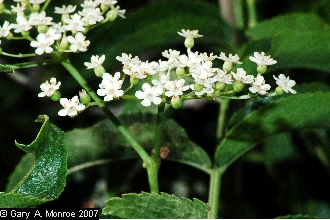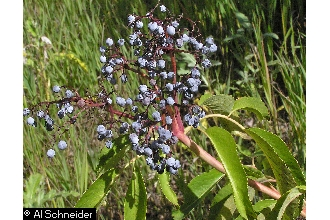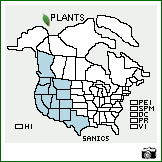Taxonomy: Kingdom - Plantae (plants). Subkingdom - Tracheobionta (vascular plants). Superdivision - Spermatophyta (seed plants). Division - Magnoliophyta (Flowering plants). Class - Magnoliopsida. Order - Dipsacales. Family - Caprifoliaceae . Genus - Sambucus L (elderberry) - Species - Sambucus cerulea Raf. (blue elderberry)
Ecology: Blue elderberry usually occurs in early seral communities or in openings in moist forest habitats and in moist areas within drier, more open habitats. It is part of the riparian communities of the Central Valley of California, and it is frequently associated with alder (Alnus spp.) and quaking aspen (Populus tremuloides) communities. Blue elderberry is not often used as an indicator species. Associated Species: Blue elderberry tends to grow as individual plants among other woody plants. Some common associates are serviceberry (Amelanchier spp.), chokecherry (Prunus virginiana), rose(Rosa spp.), gooseberries (Ribes spp.), big sagebrush (Artemisia tridentata), brome (Bromus spp.), and wheatgrass (Agropyron spp.)



